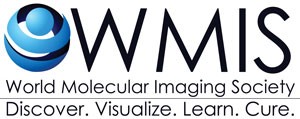The Mission Statement
To advance and support intraoperative optical molecular imaging education, innovation, standardization, and translation to clinical use.
Administrative Plan
The group was started by Michael F. Tweedle (The Ohio State University) and James P. Basilion (Case Western Reserve University) and remains co-chaired by these two individuals. Clemens Lowick was nominated and elected to serve as the program committee Liaison.
We elected two co-chairs who will also serve as secretary (Drs. Tweedle and Basilion). We do not feel that a treasurer is necessary at this time and would burden the group with unnecessary infrastructure.
1) Annual meeting at WMIC
2) White Papers on instrumentation, pharmaceuticals, indications, et. al. (two in progress)
3) Plan for WMIC: Include a plenary speaker and session topics, grouped posters, etc.
Spectum of Activities
- Develop a series of white papers defining the requirements for hardware and surgical reagent development and production. It is believed that providing these guidelines in anticipation of FDA requests will streamline the FDA approval process. We believe that the FDA will look to experts in the field to help define this “new surgical era” and we will already have developed a cogent plan.
- Support experimentation to resolve standardization issues, share publications, and web site space.
- Possibly a registry for indications that cannot be supported commercially due to IP or other issues. Lobby NIH for specific RFA.
- Recruit industrial funding for some specific activities (within mission and scope of nonprofit WMIS).
- Request specific RFAs from NBIB and NCI.
Strategic Directions
- As explained above, our strategy is to place the field out ahead of regulatory requirements such that we inform the FDA regulatory process.
- We envision molecular optical imaging instruments, pharmaceuticals, tissue dyes and methods of increasing capability, safety, and efficiency leading to use of this technique during the majority surgeries to mark and visualize tissues, cells, and biochemical events in real time. The directions are currently in improved instrumentation, topical and pharmaceutical markers, ancillary equipment, and expanding indications.
